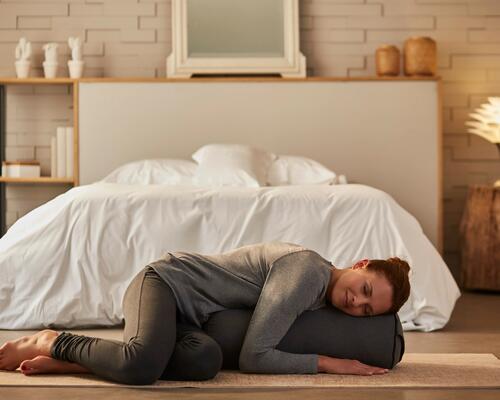Important considerations before purchasing a yoga mat
1. The thickness of your yoga mat determines the comfort of your practice.
If the mat is too thin your joints might really feel it.
Pain in the knees or wrists might distract you from the practice.
If the mat is too thick, you won't be able to feel a strong connection to the floor, which could compromise your stability during balance poses.
2. The material of your yoga mat dictates its texture, grip, and weight.
Weight is a factor to consider if you carry your mat around often.
*Additionally, if you're allergic to latex, avoid yoga mats made of natural rubber.









